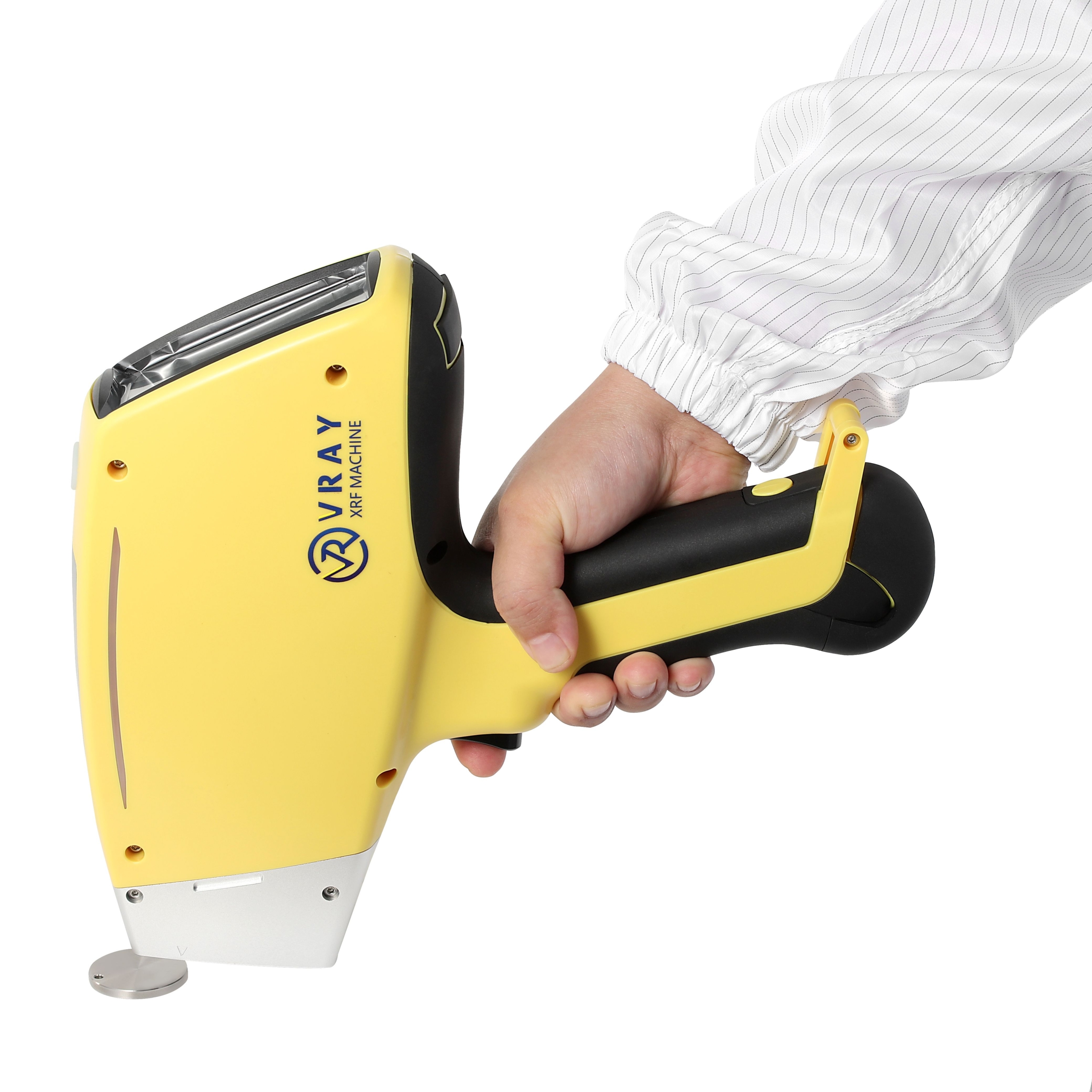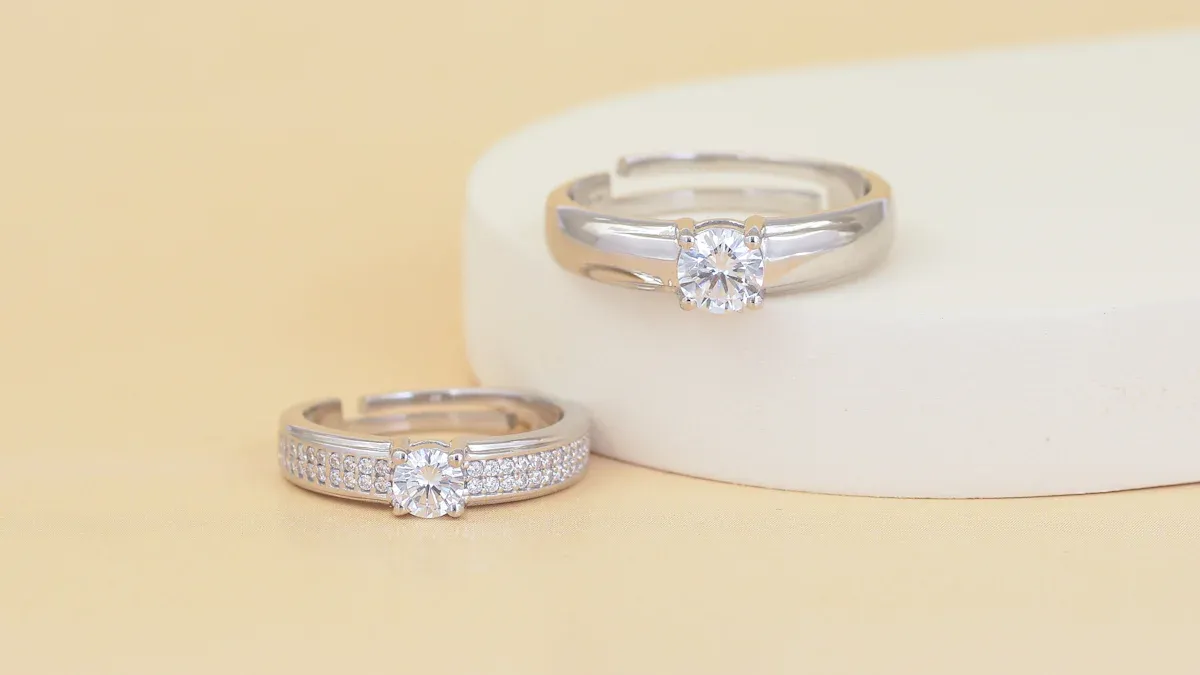Can a Handheld XRF Spectrometer Detect Silver?
A handheld X-ray fluorescence (XRF) spectrometer is a professional tool that can provide fast and accurate analysis of metal materials under non-destructive conditions, so it is fully capable of accurately detecting silver. However, the accuracy of silver detection depends on factors such as the model of the spectrometer, the type of material, and the detection capabilities of the software. Next, this article will introduce in depth the working principle of a handheld XRF spectrometer and its practical application in silver detection to help everyone resolve their doubts.

How Handheld XRF Spectrometers Work
XRF spectroscopy is a well-established and reliable analytical technique used to identify and quantify elements in a sample. The basic principle of XRF is that when a material is exposed to high-energy X-rays, the atoms in the material will emit secondary (or fluorescent) X-rays. These emitted X-rays are specific to the elements present in the material, allowing the spectrometer to determine the elemental composition.
Handheld XRF spectrometers are compact devices that use this same principle but are designed for portable use. They feature a small X-ray tube that directs a beam of X-rays at the material being tested. When the X-rays interact with the material, the elements present emit their characteristic fluorescent X-rays, which are detected and analyzed by the device’s sensor. Based on the intensity and energy of the emitted X-rays, the spectrometer can identify the elements present and provide a quantitative result.
In the case of silver, the XRF spectrometer detects the characteristic peaks associated with silver’s atomic structure (Ag). The device’s software then processes this data to deliver an accurate reading of silver content in the sample.
Can Handheld XRF Spectrometers Accurately Detect Silver?
Yes, handheld XRF spectrometers can accurately detect silver in various types of materials, including alloys, ores, coins, and jewelry. The key to success in silver detection depends on the following factors:
1. Detection Sensitivity
Modern handheld XRF spectrometers have advanced sensitivity, making them capable of detecting even trace amounts of silver. However, the accuracy and precision of detection can vary based on the model of the device. High-end models, such as those offered by VRAY Instruments, provide more sensitive detectors, enabling the detection of very low concentrations of silver, making them ideal for industries that require precise measurements.
2. Sample Preparation
While handheld XRF spectrometers are known for their non-destructive testing capabilities, the quality of the results depends on the condition of the sample. For accurate results, the sample surface must be clean and free from contaminants. Any oxidation or coating on the sample may interfere with the X-ray interaction, leading to inaccurate readings. It is crucial to ensure that the sample is properly prepared for testing.
3. Alloy Composition
Silver is often found in alloys, where it is mixed with other metals like copper or gold. Handheld XRF spectrometers can effectively detect silver in these alloys, but the results may need to be interpreted carefully, especially if the alloy contains high concentrations of other metals. The software in high-end XRF devices can often differentiate between these elements, but some complex alloys may require more advanced analysis or the use of laboratory-grade instruments.
4. Calibration and Software
The accuracy of handheld XRF spectrometers in detecting silver is highly dependent on the calibration of the device and the software it uses. Manufacturers such as VRAY Instruments provide devices with built-in calibration standards to ensure accurate results for silver detection. The software is designed to analyze the X-ray spectra and provide precise measurements of the silver content in a sample, even when it’s present in small quantities.
Why Choose a Handheld XRF Spectrometer for Silver Detection?

Using a handheld XRF spectrometer for detecting silver offers several advantages:
1. Portability and Convenience
Handheld XRF spectrometers are designed for on-site use, meaning you can take them directly to the material or sample in question, rather than sending samples to a lab for analysis. This is particularly beneficial for industries like scrap metal recycling, mining, and precious metal trading, where quick and accurate analysis is crucial.
2. Non-Destructive Testing
One of the primary benefits of handheld XRF technology is that it is non-destructive. This means you can test valuable materials, like coins, jewelry, or samples from mining operations, without altering or damaging them. This is particularly important for professionals in the precious metal industry, where maintaining the integrity of the sample is paramount.
3. Cost-Effective
Although handheld XRF spectrometers may seem like a significant upfront investment, they can be a cost-effective solution in the long run. The ability to perform real-time analysis in the field can reduce the need for laboratory testing and the associated costs, making it an economical choice for businesses that require frequent material testing.
4. Speed and Efficiency
The analysis time for handheld XRF spectrometers is incredibly fast, often providing results in less than a minute. This makes them ideal for high-throughput environments where speed is essential. The immediate feedback allows professionals to make on-the-spot decisions about materials, which can significantly improve workflow efficiency.
Final Recommendation
VRAY Instruments offers advanced handheld XRF spectrometers that provide precise, reliable silver detection in jewelry, mining samples, and scrap metals. Featuring powerful detectors, excellent calibration standards, and intuitive software, these devices ensure accurate readings across various materials. With technical support and customized solutions from VRAY’s expert team, you can rely on these tools for fast and efficient silver testing.
Frequently Asked Questions
Q1: Can a handheld XRF spectrometer detect silver in alloys?
A1: Yes, handheld XRF spectrometers can detect silver in alloys, including those mixed with copper, gold, or other metals. The device’s software is designed to differentiate between elements and provide accurate readings.
Q2: How fast can a handheld XRF spectrometer detect silver?
A2: The analysis process typically takes less than a minute, providing quick results that are useful for on-site testing and decision-making.
Q3: Can handheld XRF spectrometers detect other precious metals?
A3: Yes, handheld XRF spectrometers can detect a wide range of elements, including gold, platinum, and palladium, in addition to silver. They are versatile tools for analyzing precious metals in various forms.

WhatsApp
Scan the QR Code to start a WhatsApp chat with us.